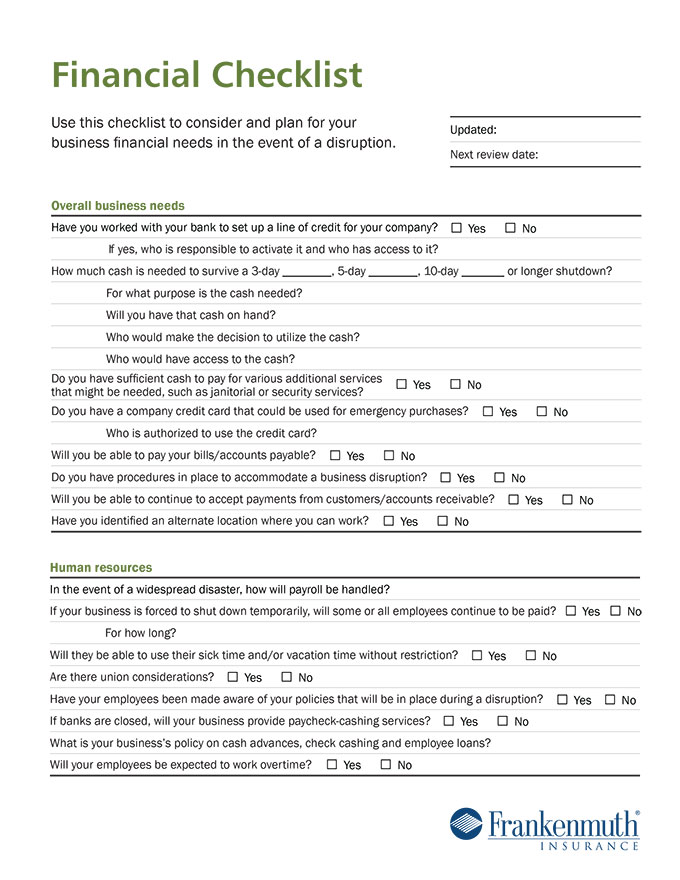When it comes to disaster planning, preparing your finances is just as important as preparing your physical space or your employees. Maybe even more so. In case of an emergency, you’ll need funds to help your business recover and keep up with regular expenses. And for damages or losses, you’ll want to make sure you have adequate insurance coverage. So, how well do you know your finances?
If you’re a small business owner, discover how to prepare for emergency expenses and how to protect your assets with insurance. Then, download the printable finance form below.
How to prepare for emergency expenses
- Identify your critical financial obligations – the ones you can’t go without paying every month.
- Have an emergency cash reserve fund to purchase supplies or equipment.
- Have a credit card or line of credit available, in case your cash reserves aren’t enough.
- Create a policy regarding payroll during and after a disaster, and be sure employees are aware of it. (Important: Don’t assume they’ll work without pay.)
- Establish clear strategies for controlling costs in a disaster situation.
How to protect your assets with insurance
Long before you’re faced with a disaster, you’ll want to meet with your insurance agent to make sure you have enough coverage. Most policies do not cover flood or earthquake damage, so you may need supplemental protection.
Additionally, we encourage you to consider the following: Do you want to be reimbursed for business disruptions, in addition to physical losses? (Who wouldn’t, right?) Even if you close your doors for only a short time, the impact on your revenue can be substantial. So, adding contingent business income coverage can ensure you’re covered for loss of income, as well as income interruptions due to damage that occurs away from your premises, such as to your key customers, suppliers or utilities.
#DidYouKnow: Contingent business income coverage can ensure you’re covered for loss of income as well as income interruptions due to damage that occurs away from your premises, such as to your key customers, suppliers or utilities.
Share on Twitter
Want to see if you’re – financially prepared for a problem? Download our printable finance form today. Use this checklist to help you know your finances as well as your overall business needs in the event of a disruption.
Frankly speaking, the best businesses are prepared for the worst, and our Disaster Preparedness Guide has you covered.

 Share on Twitter
Share on Twitter

